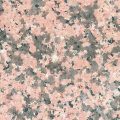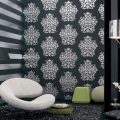Photo: Oleg Kulagin, Sergey Prikhodko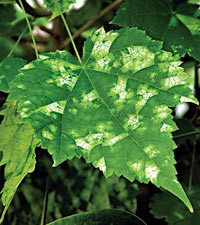 Unpretentious indoor plants
Unpretentious indoor plants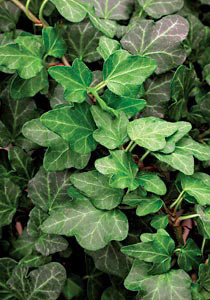 Houseplants for the officeOf course, workroom - not a winter garden. But it is here that it is desirable to place plants in the necessary (minimum) and sufficient (maximum) quantities. Why? There are many reasons. Modern technology - our office and home offices are simply stuffed with it - guarantees electromagnetic radiation, a library and documentation - paper dust. And the materials from which the furniture, wallpaper, floor, and ceiling are made regularly supply chemical fumes. In addition, flat gray surfaces and strict geometric shapes make a person feel melancholy and emotionally tired. If the area of the office is small, all these troubles become noticeable. Only flowers can successfully combat them. Unfortunately, not all plants can be placed in the office. Some cannot stand radiation and dust, others require abundant watering and humidity, which is harmful to equipment and books. Many require careful care, but is there time at work? However, some plants seem to be specially created for the office.
Houseplants for the officeOf course, workroom - not a winter garden. But it is here that it is desirable to place plants in the necessary (minimum) and sufficient (maximum) quantities. Why? There are many reasons. Modern technology - our office and home offices are simply stuffed with it - guarantees electromagnetic radiation, a library and documentation - paper dust. And the materials from which the furniture, wallpaper, floor, and ceiling are made regularly supply chemical fumes. In addition, flat gray surfaces and strict geometric shapes make a person feel melancholy and emotionally tired. If the area of the office is small, all these troubles become noticeable. Only flowers can successfully combat them. Unfortunately, not all plants can be placed in the office. Some cannot stand radiation and dust, others require abundant watering and humidity, which is harmful to equipment and books. Many require careful care, but is there time at work? However, some plants seem to be specially created for the office.
What to choose
Number one in the 'AB hit parade' » –Chlorophytum comosum (sedge). It cleans the atmosphere of harmful impurities day and night, neutralizes excess ionization. Chlorophytum is undemanding to lighting. It loses its decorative effect only in a very dark place. It looks great in any interior - classic, minimalist, and modern. Next is the noble laurel. A wreath of its leaves was once used to decorate the heads of the wisest (by the way, the word "laureate" itself comes from the name of this plant). As it turns out, this was no accident: laurel treats headaches caused by computer "overuse", reading and writing, it secretes phytoncides that disinfect the air and improve cerebral circulation. Laurel does not have any special requirements for lighting. It requires moderate watering. It tolerates coolness and does not react to drafts.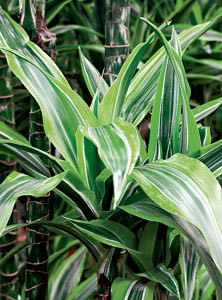
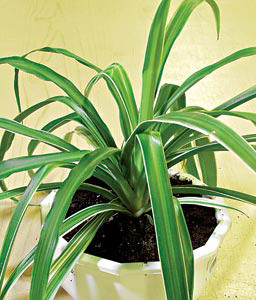
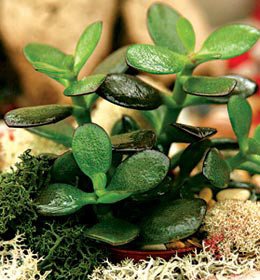
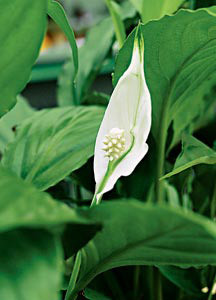
- Photo 1. Dracaena - "non-left" plant.
- Photo 2. Chlorophytum crested. Its curved leaves form a beautiful wide outlet, and on long peduncles from time to time daughter outlets grow, which can be rooted.
- Photo 3. Crassula arborescens. It should be kept in a light place all year round. And in summer it is advisable to take it out of the room onto the balcony.
- Photo 4. Wallis's Spathiphyllum. It grows well in diffused light in a heated room. It is protected from drafts, the pot is placed in wet peat or on a tray with pebbles.
Lemon reduces the number of viruses and germs inair by an average of 70%. Its aroma relieves stress and significantly increases productivity. A decorative tree decorated with fruits will be a bright accent in a strict office.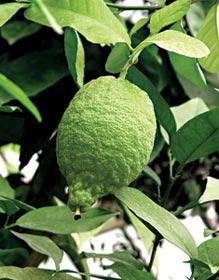 The elegant spathiphyllum blooms almost all year round.Shade-tolerant, does not require special care, and humidifies the air wonderfully. It will fit well into the interior, made in the style of art deco or minimalism. Sanseveria, or pike tail, is an indestructible plant. Like chlorophytum, it perfectly purifies the air and neutralizes computer radiation. It does not cause any problems: sanseveria belongs to succulents - plants of a dry climate, with its own supply of moisture, and it does not need to be watered, fed and sprayed so often. Spectacular sword-like leaves can be of one color, striped and variegated. But cacti, contrary to popular belief, do not improve or clean anything, but actively accumulate dust and reluctantly give it up. "Dust removal" of cacti is a long and uninteresting process. Therefore, it is better not to display them in the office. Abutilon is very good. Its leaves are similar to maple, and the flowers are very flashy, of various colors - white, pink, yellow, red. Abutilon simultaneously purifies and humidifies the air. However, this plant needs space, so it is better for owners of a large office. Dracaena and ficus can easily replace tropical palms, and they are very unpretentious. A distinctive feature of these plants is the ability to neutralize atmospheric formaldehyde and ammonia. Achimenes is a dense bushy plant. It blooms from early summer to autumn. Balsam and begonia will be appropriate next to it. For pilea - a variegated low plant with glossy leaves - the size of the room does not matter. an ideal background for flower arrangements, since its own flowers are inconspicuous, and the leaves are beautiful and spectacular. Indoor ivy, cissus, epipremnum (representatives of creeping vines) and some succulents (say, haworthia or crassula (money tree)) will help create a plant image of the office. With a variety of shapes and colors, they will bring liveliness and expressiveness to the working atmosphere. Finally, bonsai-style plants will put an end to office phytodesign. They will symbolize a smooth transition from natural to man-made forms.
The elegant spathiphyllum blooms almost all year round.Shade-tolerant, does not require special care, and humidifies the air wonderfully. It will fit well into the interior, made in the style of art deco or minimalism. Sanseveria, or pike tail, is an indestructible plant. Like chlorophytum, it perfectly purifies the air and neutralizes computer radiation. It does not cause any problems: sanseveria belongs to succulents - plants of a dry climate, with its own supply of moisture, and it does not need to be watered, fed and sprayed so often. Spectacular sword-like leaves can be of one color, striped and variegated. But cacti, contrary to popular belief, do not improve or clean anything, but actively accumulate dust and reluctantly give it up. "Dust removal" of cacti is a long and uninteresting process. Therefore, it is better not to display them in the office. Abutilon is very good. Its leaves are similar to maple, and the flowers are very flashy, of various colors - white, pink, yellow, red. Abutilon simultaneously purifies and humidifies the air. However, this plant needs space, so it is better for owners of a large office. Dracaena and ficus can easily replace tropical palms, and they are very unpretentious. A distinctive feature of these plants is the ability to neutralize atmospheric formaldehyde and ammonia. Achimenes is a dense bushy plant. It blooms from early summer to autumn. Balsam and begonia will be appropriate next to it. For pilea - a variegated low plant with glossy leaves - the size of the room does not matter. an ideal background for flower arrangements, since its own flowers are inconspicuous, and the leaves are beautiful and spectacular. Indoor ivy, cissus, epipremnum (representatives of creeping vines) and some succulents (say, haworthia or crassula (money tree)) will help create a plant image of the office. With a variety of shapes and colors, they will bring liveliness and expressiveness to the working atmosphere. Finally, bonsai-style plants will put an end to office phytodesign. They will symbolize a smooth transition from natural to man-made forms.
Selection rules
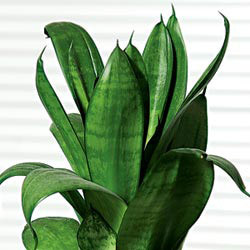 Filling the room with flower pots is half the battle. Some rules still need to be followed.
Filling the room with flower pots is half the battle. Some rules still need to be followed.
- Firstly, the size and number of plants shouldcorrespond to the size of the office. In a small one, one large plant will be enough. It will become a natural visual "zone divider".
- Plants with large leaves are appropriate in the case when in the office a little furniture.
- A long, narrow room will benefit from plants with arching stems and small leaves.
- Bold, "active", showy plants should not dominate. One or two "no more, otherwise the harmony will be disturbed.








